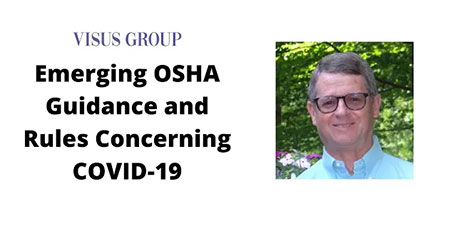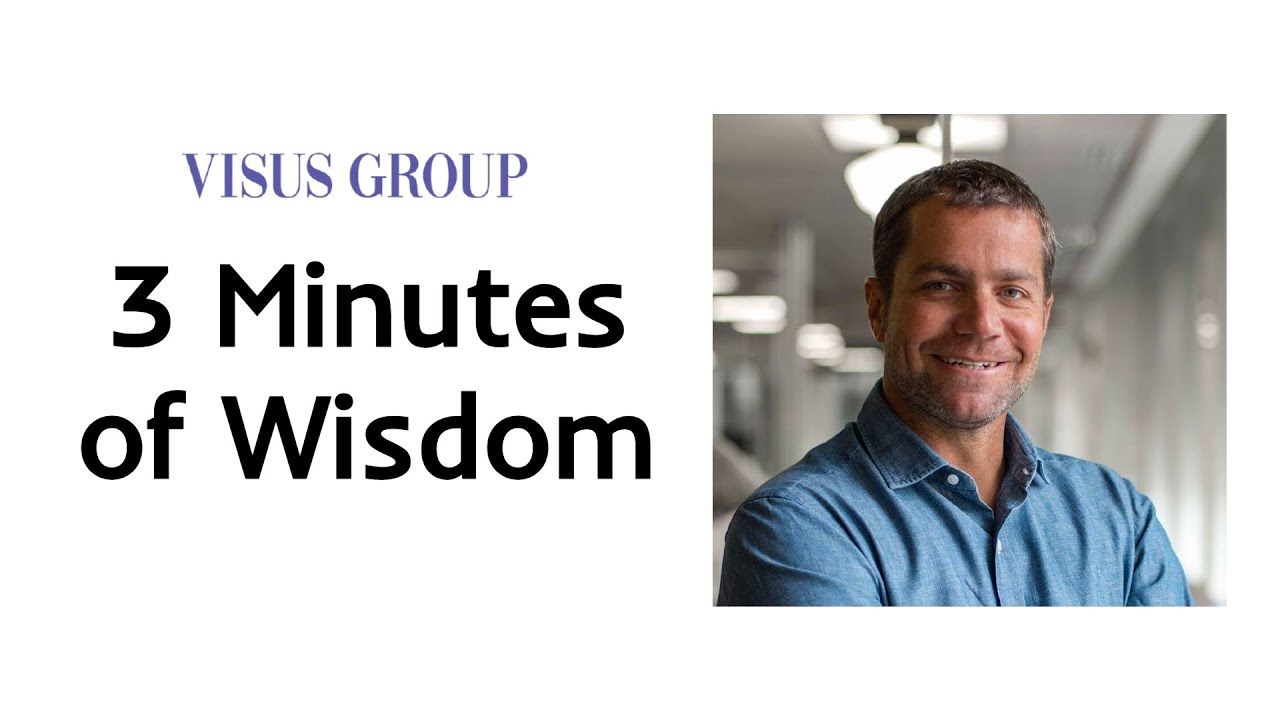The Four Keys to Building a World-Class Production Team
“You cannot motivate people! All you can do is create an environment that encourages performance”. How about that statement? It did not come from me. Rather it came from my associate Steve Armstrong that was managing $4 billion in staffing revenue. How about this statement from Steve, “The number one driver of productivity is if the employee believes his or her manager cares about them.” Yikes! My associates involved in the extensive research conducted by Gallup on what the greatest managers do would disagree. They would say, “The number one driver of productivity is if the employee knows what is expected of them”. Creating an environment that encourages performance, clearly communicating expectations, caring for the persons being managed, etc.. Where in the world does a small business owner or manager begin in developing a world class team?
#1 Define The Roles
Developing a world class team begins with clearly defining the specific responsibilities for each role on the team. Let’s take fulfillment. The recruiters, are they sourcing, conducting phone screens, selling candidates on job opportunities, doctoring up resumes, negotiating pay rates & benefits & training, selling hiring authorities on candidates, etc.? Are the recruiters running a full desk? If yes, what exactly does that mean? How about the sales representative role? What percentage of the role is research, prospecting, getting contracts signed, job order information, developing relationships, presenting candidates, negotiating, solving post hiring problems? With both the recruiting role and the sales representative role there are so many moving parts. The very first thing to consider in developing a world class team is clearly – clearly – clearly defining all the specific work tasks and responsibilities specific to each role on the team.
#2 Establish Expectations
No doubt, establishing achievable expectations is an area that the staffing industry struggles with. It must be done in order to develop a world class team. These are the performance metrics that surround the role(s). On the fulfillment side, think about phone calls, phone time, connects, phone screens, interviews, submissions, starts, etc. On the sales side think about connects, face-to-face or zoom meetings, networking events, leads followed up on from recruiting or marketing, etc. Some business owners I have met say, “When I worked at X-staffing company I never agreed with or liked the metrics. I always said that if I owned my own staffing firm, I would never have performance metrics.” Think about this, the expectations that surround the role(s) is how an organization communicates to its employees how to succeed within the organization. Remember the Gallup data, “The number one driver of productivity is if the employee knows what is expected of them”. And if you ask employees, they want to know how to succeed in the company. Employees “want to know” what to do on a day-to-day basis that leads to success and productivity.
#3 Create a Development Plan
The staffing industry benchmarking data shows that staffing firms spend less than 1% of revenue on training and development. At the end of the year, if the sales reps and recruiters are not faster, smarter, better than they were at the beginning of the year then the management has failed in their job responsibilities. We have two dynamics here: training and development. Training is all about how to use the Applicant Tracking System, learning the recruiting methodology, learning the sales methodology, and all the intricate work tasks attached to these methodologies. The best staffing companies in the industry offer training every week. Why? Technologies change, processes change, customers change, and we all get stuck into bad habits. Development is all about knowledge and skills. Are the sales reps getting better at getting in the door of new clients or improving on ratios between jobs orders obtained and temps or contractors billing? Are the recruiters getting better at hires to submissions? Sales reps and recruiters move from a novice to junior to a senior. Well, who on board is “developing” them into seniors? How does that happen in the organization?
#4 Connecting the Dots
Back to Steve, my associate, does the manager actually show they care about their team members? I had a client that once told me that on Monday morning he would go around the office and greet all the employees, ask about their weekend, wish the best for the week and on Friday, as employees were leaving for the weekend, he would show them a spreadsheet and inform them if they made him money or cost him money. I laugh every time I think about this story. The reason why caring and connecting with team members is so important is that it is impossible to understand what is important to employees if no one connects with them. It is the pathway to understanding what motivates them (it is not always money). Rather, the intrinsic motivations, the aspirations, the challenges that all employees bring with them into the work environment.
Developing a world class production team is no short order. There are certainly a lot of moving parts with many components to consider. I have mentioned just a few of them here in this short blog. At the Visus Group, this is what we do. We help staffing organizations take a step back, think out, map out and develop world class production teams. Retention, engagement, productivity and profits go through the roof. Visit us at www.visusgroup.com to learn more about how you can benefit from a relationship with us.
Emerging OSHA Guidance and Rules Concerning COVID-19
Case Study: The Importance of Culture
by Visus Group Partner Don Jastrebski, Culture Consultant
The president of a $20-25 million education company, was told by his college buddy not to hire a particular candidate to replace himself. He had taken over as president when the family hedge fund acquired the organization. He was trying to set it up for the future. The president ignored this advice, as is usually the case, and hired the candidate anyway. 6 months later he fired the candidate for dishonesty, and embarked on another search.
This time the president thought bigger. With hedge fund backing, he had seemingly unlimited resources. Now, he wanted to hire the superintendent of Dallas Public schools. Again his college buddy told him to not hire this guy—he didn’t fit the culture. But again he ignored this advice. He was enamored with the superintendent’s pedigree, his contacts, his standing in the education industry. He would bring prestige to the organization and put the company on the map. He was totally focused on this candidate’s potential—which he envisioned in his own mind. He really didn’t want to hear naysayers who were warning of the candidates lack of culture fit. He hired him anyways. Less than a year, and hundreds of thousands of dollars later, he fired him. He kept him longer than he should have because he made such a large investment to persuade the candidate to leave Dallas and relocate to join a private sector company.
Not only did he waste hundreds of thousands of dollars in relocation cost, signing bonus, salary, termination settlement and outplacement for the failed hire—but he wasted hundreds of thousands of dollars in lost sales, productivity and executive salaries, while his team invested hours in things that had little benefit to the company or its customers. The former superintendent, upon his arrival, set about establishing a number of initiatives and programs that he thought important, but were superfluous. They were totally unimportant to customers and staff and the company’s best people spent hours on initiatives the customer didn’t care about. Different cultures worry about different things, and the superintendent’s preferences were of little importance to company customers, who primarily shared the company’s culture. Finally, even the hedge fund had its cost limit and the president had to pull the plug.
Thereafter, every new hire had to take the culture profile, even though his college buddy told him it was really only necessary for employees with customer contact or decision-making responsibility.
The Story Continues
A few years later, this same company had difficulty retaining sales people after Federal ‘No Child Left Behind’ legislation revamped U.S. education and disrupted the industry. Previously, customers were school principals, or on occasion, district superintendents. Now they had to sell to state legislators trying to implement the Federal mandate. Many on the sales staff could not make the transition from selling to local customers to selling at the state level. The company had a dismal record replacing those who could not adjust. The majority of sales’ new-hires left within the first year. The situation was desperate.
This time the CAT (the same Culture Assessment Tool) was used to assess the sales force. The company was amazed to discover that their few successful sales people all had the same culture profile—the same mindset. Thus began the search to find candidates with their top sales performers’ culture profile. They had a 30 to 35-person sales force with a supporting cadre of 40+ customer account representatives who trained and supported customers while maintaining the the relationship. This group was assessed by the CAT to identify those with the same top sales performer mindset, thus representing at least potential for success. These people were offered promotions into sales. To the company’s amazement those who chose to accept the promotion were immediately successful with virtually no turnover—they knew the product, knew the key customer issues and thought like the customer. Their mindset matched their customers’ mindset—in which the customers’ needs and expectations were embedded. Customers know they understood them, they trusted them, and sales followed.
Therefore:
- Assesses a candidate’s fit with the receiving culture
- Discovers if a candidate’s past success was accomplished in the same or different culture
- Foreshadow the candidate’s potential for long term success
- Avoid the cost of a bad hire. Identify a candidate’s fit
- Use the Culture Assessment Tool (CAT) to select top candidates.
-
- CAT provides the hard data and research to identify the culture type preferred by high performing individuals
- The output provides the context for selecting candidates who prefer the same top performer mindset
- These candidates have the appropriate thinking/decision bias that attracts the target mindset of external & internal customers.
- All other selection instruments measure a candidate’s strength in targeted traits found in a normative population across all culture types.
- They measure specific traits generalized to all cultures. They do not measure a candidate’s fit with one specific organization culture—or their customers.
- Other selection tests measure success traits, not culture fit.
As a staffing or recruitment firm leader, establishing excellent culture and ensuring there is culture fit should be one of your larger roles in the business. The impact is too important to miss! If Visus Group can provide any guidance, please let us know!
Motivating Teams & Executing Strategy
Visus Group got to know Jacques Panis, now CEO of Mary's Medicinals, when he was President of Shinola. Communication x 10 + becoming an approachable leader = execution at its best level. And this is just the start as Jacques adds several great practical leadership ideas. You will want to watch this interview through to the end to hear Jacques’ piece of wisdom. Enjoy!
Continue readingIn Staffing, those firms with a great strategy go far, those with a great culture go much farther.
Don’t get me wrong, I love strategy. The big decisions. The army generals in the war room, looming maps, deep thought discussions on sweeping moves. But where the rubber meets the road, where execution is had, where battles are won, is at the culture level. “Culture eats strategy for lunch” is a very famous comment made by Peter Drucker that drives to the very point of this article – culture is key. What this means is that a company can have the most well thought out strategy in the world, but if the company lacks an engaging culture or does not truly align to a common purpose, the results could be disastrous. With my staffing clients, I see a wide range of companies with strong cultures and those with ever-changing cultures or lack identity. The degree of growth among these various firms is eye-popping.
Building an engaging culture is a very challenging task regardless of the size of the business. It is likely more difficult in small firms versus middle market or enterprise firms. In small firms, the culture is driven 100% by the owner / operator of the business. Venturous decision making versus prudent decision making, autocratic management versus collaborative management, highly standardized sales methodologies versus non-standardized sales methodologies, etc., it all falls on the back of the owner / operator. How can this problem be solved and how can a firm of any size build an engaging culture?
Build a Culture Team
It all starts with a compelling vision and core values. A VISION is not “we want to grow to $100M in revenue”. Vision is not “we want to open offices in 25 States”. Vision answers the question, “What difference in the lives of our clients, candidates and internal employees does our organization make?” It is unchanging. Deeper than and far more reaching than a revenue goal or a strategy. Core VALUES are the principles in which we live by. The gas that fuels the engine. The guideposts that direct our behaviors with clients, candidates and internal employees. These values are mentors that coach us through decision making. If a company has no vision and no core values then it is dead in the water. The company will never have an engaging culture where execution and positive results will always be an issue.
Once vision and core values are established, management can build out what we call a “culture team”. What is this? It is a team of internal employees selected by leadership that is both cross functional and cross generational that meets or exceeds the newly discovered core values. If a company is serious about creating an engaging culture then members from sales, operations, back office and management need to all be represented on a culture team. Representation just from one or two departments and the culture team’s efforts will not only become meaningless but likely that the team will experience group think. Cross generational representation is also critical. Generational gaps are real. A lot of companies never address it. “Oh, that’s just John, he is long in the tooth”. “Oh, that’s just Ashley, she is a millennial”. This type of thinking and speaking in a company is a culture killer.
Once this team is established, they conduct a series of interactive dialogues on some challenging questions. Notice I did not say “a series of meetings”. These engagements are not meetings, rather they are spaces where members of the organization can speak from their hearts about what matters most to them about being a sales executive, about being a recruiter, or about being a back office support person to the organization. They are spaces where members share where they find purpose and meaning in careers and in their working relationships with their colleagues. Creating these spaces is crucial in building a sense of purpose and accountability among the entire members of your team. When we typically engage in a cultural assessment with our clients, one easy way to test whether a staffing firm does indeed have a strong and engaging culture is through a brief, informal focus group. Why do I say focus group? Because it’s an easy way to see whether your teams are rowing in the same direction (by aligning to a common culture or purpose) or spending their time complaining and pointing fingers. It’s unfortunate, but it happens more often than not. And, most importantly, it’s best to get everything out on the table in order to build a true and honest culture within your group.
A culture team will dig deep and respond to questions about the specific behaviors that tie back into the values of the organization. What specifically does it mean to be a culture of integrity? What are the specific behaviors that exude living out a value of integrity? Take any of the common values we see posted on a company’s website such as, Honesty, Integrity, Community. Someone, the culture team, or better yet, leadership has to articulate the specific behaviors that live out the values or short list of values. There is a reason why a sizable number of employees cannot recite the company’s core values. It has nothing to do with their memory. They simply have never been asked to enroll in the company’s values or they have never been shared. The behaviors are not articulated, modeled nor discussed in any corporate gatherings by leadership and most often, the founder / owner.
Culture work is not for the faint of heart. It is risky. It is work. Here at the Visus Group, this is the kind of work we help owners and leadership teams walk through. The war for talent is a real thing. Sure, we can certainly work with your staffing on creating a sound strategy, or building a growth plan, but having an innate, engaging culture goes a long way toward achieving results and beating the competition.
Another year, another set of problems? Or can we really grow?
Happy 2021! As we move into this new year, here are a few predictions (or maybe not predictions as much as obvious statements!) about where we are headed as an industry. Let’s get started. The staffing industry is going to experience double digit growth in 2021. Borrowing money is not only going to be accessible, but interest rates are going to remain low. The rollout of the COVID-19 vaccine will increase consumer confidence and hopefully will allow us to open more doors to dining, schools, and back to the office.
These are all great signs for us in the staffing industry. But, how do we take advantage of these opportunities? What key initiatives should we be focusing on to put us on a path for growth? And finally, how do we avoid our past mistakes we’ve made as it relates to our business planning? Trust me, these are common questions all staffing owners and leaders ask themselves each year. Here are my top recommendations to avoid perennial pitfalls:
Refine Your Hiring Methodology to a Science
Many staffing firms struggle hiring new employees. Staffing firms that succeed in this area execute on several components:
- First, they have a proven hiring process, and they DO NOT vary from this process.
- Second, they have a very strict hiring profile. You guessed it, they don’t vary from this hiring profile.
- Third, they use a valid and reliable personality survey tool.
- Fourth, they know how to interview or they should, after all, they are a staffing company! There is an art to networking and building businesses, there is a science to interviewing and the best staffing firms have become experts at this process for their internal hiring.
Faulty hires cost staffing firms millions in lost revenue through poor culture fits or lack of production. Refine your hiring methodology to a science to take advantage of the pending growth opportunity.
Understand Your Culture
It is not uncommon to see 20% of a staffing firm’s sales reps generating 80% of the revenue. What if a staffing business owner or manager can figure out how to hire “A” players? You can! This is where cultural awareness and matching come into play. Your company has a very specific “culture”. For example, collaborative versus independent, or entrepreneurial versus highly structured, or authoritative decision making versus collaborative decision making. These are just a few cultural preferences. There is a way to understand your firm’s cultural preferences and then discover the cultural preferences of candidates your firm is recruiting and interviewing. This is the secret sauce to hiring “A” players that fit and thrive in your organization. But remember, Sticking to a great hiring process and a culture match is one thing – but also ensuring we have a rock solid training program in place that is scalable and knows it works is critical. As leaders / managers of an organization, we have to ‘create the opening’ and provide all the necessary resources to set our people up for success. That all said, getting them in the door is one thing, ensuring we set them on a proper development path is critical as well versus the ‘sink or swim’ mentality.
Don’t Get Crazy with Remote Work
There is a lot of talk in the industry about staffing firms retaining a 80% virtual business model. The data is starting to come in. Sales teams that are working in an office environment where they can easily collaborate are more successful over sales teams that are working remotely meeting on zoom a couple of times of week. Ethan Mollick, Associate Professor at Wharton, recently conducted a study on the productivity of remote working versus in the office working. Mollick states, “A downside of remote work is that we can’t casually learn from each other the way we can in an office. The effects of such interactions are huge: Lunch meetings between two salespeople where they discussed sales approach boosted revenues for both by 24% four months after”!
The fact of the matter is that most people cannot reach their full potential working remotely. Throughout this COVID-19 pandemic, it has been easier working from home with restaurants and bars and a lot of other venues closed. Once the economy really opens, we are going to see how effective the work from home model works. The organizational behaviorists suggest the 80/20 rule. 80% working from the office and 20% working remote.
Double Down on Your Sales Strategy
This is a big one for staffing firms that will succeed as the economy comes back. You can hire great employees, but if your sales strategy is lacking or non-existent the probability of success will decrease radically. What is included in a strong well-functioning sales strategy? A well-defined ideal client profile for one. A client profile that not only outlines the demographic characteristics of a great client, but the psychographics and geographic characteristics as well. Account planning that has names of decision makers, total contingent spend, percentage your firm has, action steps and such that is the tactical steps your staffing firms needs to execute upon to obtain high quality business and develop sustainable relationships.
As mentioned, we just outlined a few key initiatives to focus on in this year to take advantage of the projected industry growth, but there are many more. The Visus Group has become the Resource Hub to the staffing industry from an organizational development and growth strategy perspective. Whether it is business planning, financial planning and analysis, compensation analysis and design, sales execution, leadership development and much more the Visus Group is here to help. And our Presidents RoundTable has become a fantastic resource for many business owners in the staffing industry. At the end of the day, success is all about forging ahead, not looking back.
Check us out at www.visusgroup.com. I wish you all the best of success in 2021.
Taylor St. Germain
Financial Management for Small Business Owners
How to separate your personal finances from business, the benefits of solid financial planning for your staffing firm, and the advantages of surrounding yourself with a great team are just a few tips Shireen Daniels, owner of Lighthouse Financial Group, shares in this 3 Minutes of Wisdom.
Continue readingPlanning during a Pandemic – why it matters!
by Visus Group Partner: Derek Pittak, Founder & Professional EOS Implementer, Blueprint Vision Group
The truth is, we have all been inundated with articles these past nine months that have pointed out – 2020 has shifted the way many of us think and operate in our personal and professional lives. It has made many entrepreneurs, leaders, and organizations think differently about what the future looks like and how to handle things around workforce engagement/culture in a remote environment, office space, activity standards, and how to lead their people to name a few. The staffing industry is not unique…the COVID-19 pandemic has affected all of us similarly. I have seen where the impact of COVID-19 has caused some staffing businesses to panic, while many pivoted, and some have completely overcome.
As a business owner who serves the staffing industry, I am constantly faced with helping my clients overcome COVID-19 related challenges. Many owners and leaders are asking, what does good look like in terms of activity for sales and recruiting? How do we get prospects to schedule ‘zoom calls’? How do we manage our staff remotely? Is marketing effective in staffing and if so, what should we do? With over a dozen clients in the staffing industry and my background as an executive of a large staffing organization, past experiences, best practices, and peer to peer sharing has helped me, help my clients!
For anyone who owns a business, you may have found that it is extremely important to plan during a pandemic, just like I did. When you leave your business to chance, it is random, and as one of my clients tells me, “random is bad”. In a business like mine, with a niche focus in the staffing industry, I need to be extremely surgical with how I spend my time and where to focus. I like to think of planning as the first step to optimizing your business. There are many ways to plan in your business, several methodologies out there, and one in particular led me to start my own practice because of how passionately I felt about how it can help many staffing companies overcome their obstacles to growth. That system is the Entrepreneurial Operating System (EOS).
EOS simplifies what many organizations and leaders want to over-complicate. The system is rooted in mastering the five leadership abilities that help leaders breakthrough the ceilings they will face on their journey to whatever success looks like for them. EOS is designed to help companies grow stronger in the six key components of their business – Vision, People, Data, Issues, Process, Traction by instilling discipline and accountability through the use of simple tools and timeless, proven concepts. I want to be very clear here – EOS is much more than business or strategic planning, it is a system designed to instill structure, prioritization, focus, and execution that will optimize your business. A famous entrepreneur, John Doerr, once said, ‘ideas are easy, execution is everything’. That is what EOS helps teams with through a complete toolbox and process that helps keep teams and organizations on track.
That toolbox starts with mastering the five foundational tools that will no doubt get your team more focused and aligned around execution. Those are:
- Developing and sharing the right vision through the Vision / Traction Organizer (V/TO)
- Creating a crisp and clear Accountability Chart so we know who is accountable for what
- Setting the right priorities every 90 days through Rocks
- Executing on the proper Meeting Pulse every week, quarter, and year to become better predictors, issue solvers, and understand where are business is going
- Identify the right Scorecard data and measurables to understand if we are winning or losing week in and week out to ultimately hit our goals
These five tools, if executed properly, will take your team so much farther than without. They will in no doubt do what us EOS Implementers call ‘VTH’ – Vision by getting everyone on the same page with where you are going and how you will get there. Traction by instilling discipline and accountability and Healthy by creating a more cohesive leadership team and organization.
At the end of the day, there are many different operating models out there to run your staffing business. I urge you and challenge you to choose one – not pick a flavor of the month or try to cobble your own together from different systems you like. Just choose one and stick to it! You cannot gain traction in your business by always ‘going alone’ i.e. without a plan because when a pandemic strikes, how do you plan to come out of it? Having the right plan or vision, paired with the right people to help you execute that vision – remember, the biggest barriers to growth are your people, and having a rock solid repeatable process will help prepare you for and execute against the majority of challenges your business will be faced with!
EOS is aimed at helping privately held entrepreneurial organizations that want to grow but yet are stuck, do not plan, stick to a plan and hit the ceiling time and time again. 90% of the 25,000 staffing companies in the United States are $10M or less in revenue. Plenty of them want to break that barrier. That is what EOS helps organizations solve and why I believe EOS is a perfect fit for the staffing industry. As one of my clients told me recently and the best compliment I have received to date: “I don’t know why we waited so long to use a system like EOS, it got us through the pandemic this year”.
______
Derek Pittak is a former Integrator and Chief Operating Officer of a $100M+ staffing organization turned Professional EOS Implementer. He works exclusively within the staffing industry and his clients cover the spectrum of verticals within the industry as well. If you want to learn more about EOS or Derek, please visit blueprintvisiongroup.com or email Derek directly at derek@blueprintvisiongroup.com










